This will be the last installment of this three-way comparison. My apologies for it taking so long, but such is life. I have a lot going on right now. I’m squeezing this into the early morning Sunday before I continue preparing the sites where the new furnace and AC unit will go, both indoors and outdoors.
So … we left off with some shots of the birds that hang around the observation platform over the beaver lodge in the Stony Swamp. To allow you to catch up ….
At this point, I start focusing on the lodge itself and I leave the platform to continue around the loop that visits other sections of the Stony Swamp.
Here is the lodge as recorded by the HS25. I have not managed to see the beavers themselves this year, but I imagine that they don’t come out much with a lot of people around.
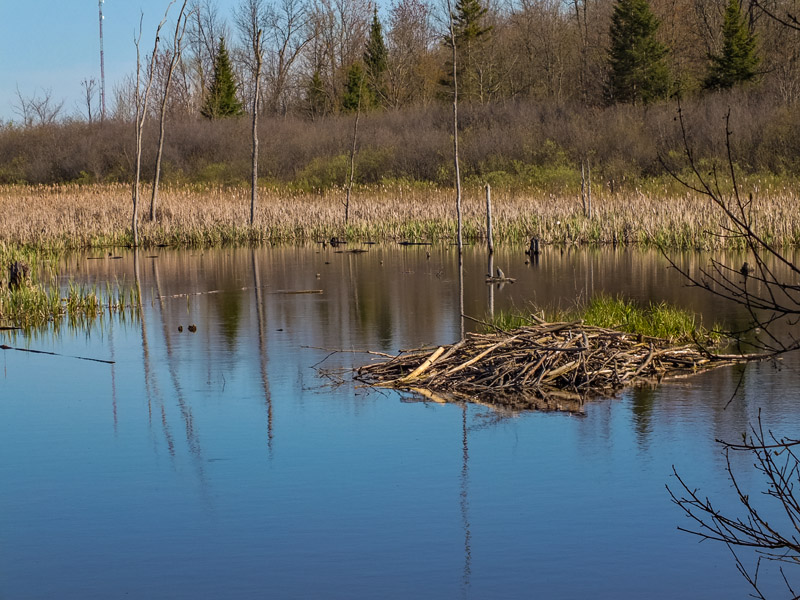
Fuji HS25 100iso f/6.4 1/340 -1/3ev 103mm EFL
It really is a pretty spot, especially in late afternoon sunlight on a near-cloudless day.
The D7000 captures a similar shot, but isolates on the rather interesting logs sitting in the water not that far from where I am standing and on the beautiful reflection of the dead stumps sticking out of the swamp.
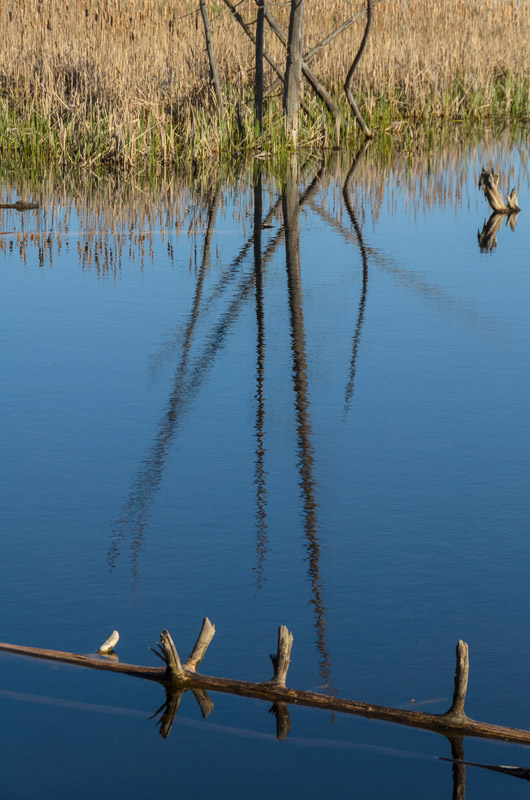
Nikon D7000 + 18-200VR 640Iso f/10 1/1250 -2/3ev 135mmEFL
The F770EXR does this scene well too.
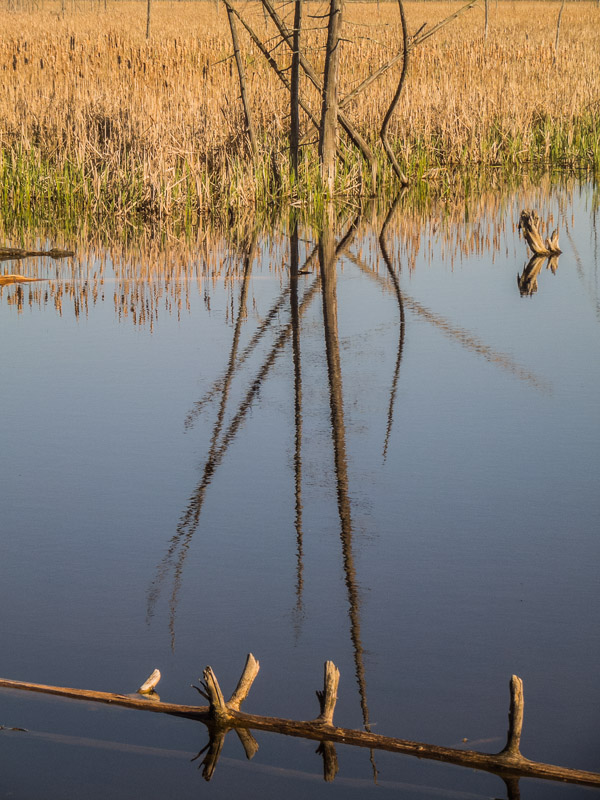
fuji f770exr 100iso f/5.3 1/350 0ev 133mm efl
A more muted color here. This was not the Fuji’s fault, as I processed this from RAF. Of course, if you look at the EXIF, you will see F550EXR on these, as ACR did not yet support the F770. I performed the EXIF replacement to allow ACR to handle these files. They worked fine, I was just looking at a more muted presentation when I performed the F770 edits.
Then I zoom in on the lodge to an isolation shot.
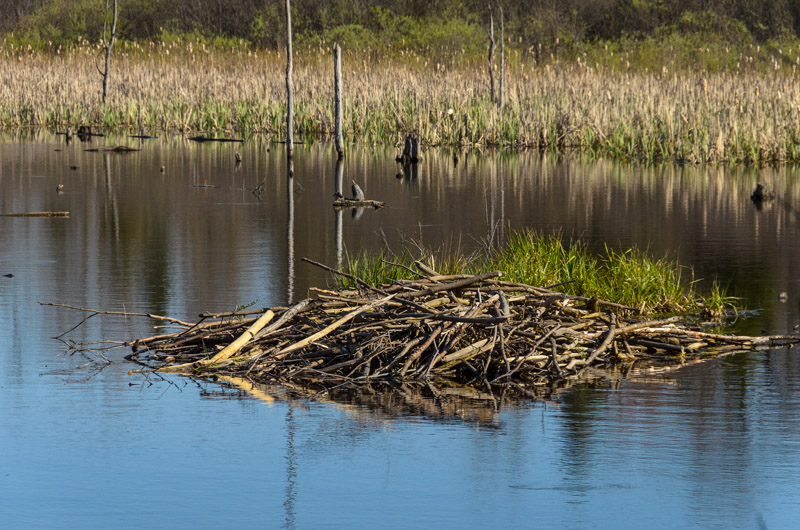
Nikon D7000 + 18-200VR 640iso f/10 1/1250 -2/3ev 195mm efl
Looking at this rendering by the Nikon, and the rendering above by the HS25, you would be right if you said that there was minimal difference at web sizes. There is. The HS25 is perfectly capable of capturing a nice shot of mid toned subject in bright light. The dSLR of course can do this in any light.
I take a last look at the geese right in front of me here with the D7000.
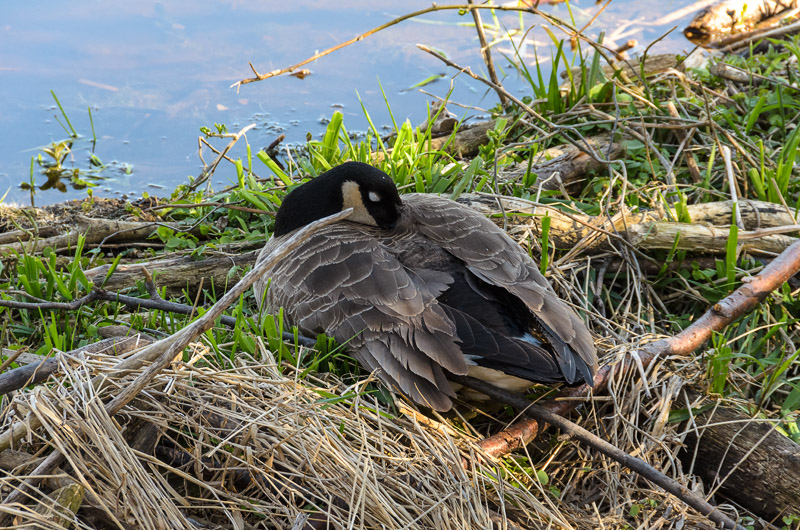
nikon D7000 + 18-200VR 640iso f/10 1/125 -2/3ev 300mm efl
And before I go, I try to capture that family of geese that is hidden in the grass so far away (at least 100 feet, probably more. Here the HS25 gives me a really nice look at the babies, with 5 being clearly visible. There might be a 6th hidden behind the one on the right, but I have not been able to divine whether it is an illusion or not.
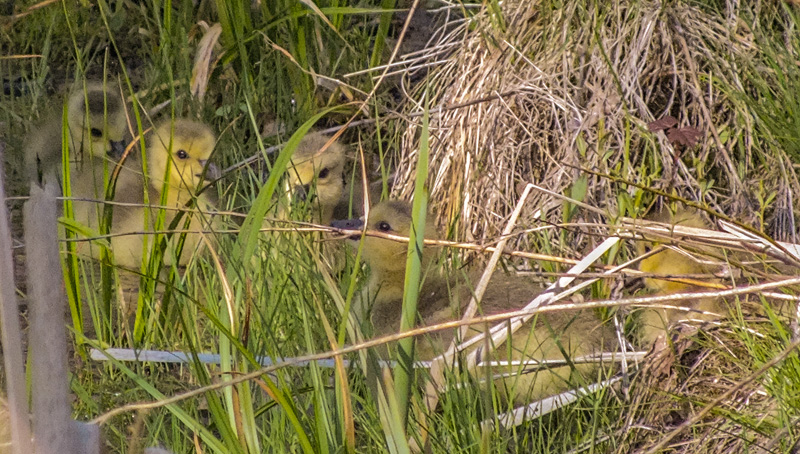
Fuji hs25 500iso f/6.4 1/250 -1/3ev 2x iZoom 1374mm efl
And that was that. As I wandered around the loop, I came upon another platform that is a part of the trail, i.e. you have no choice but to traverse it. This looks out onto another part of the swamp and in the distance is another lodge. Late afternoon light is not great from this angle and the small sensor forces me to process a fair bit to get things looking lush.
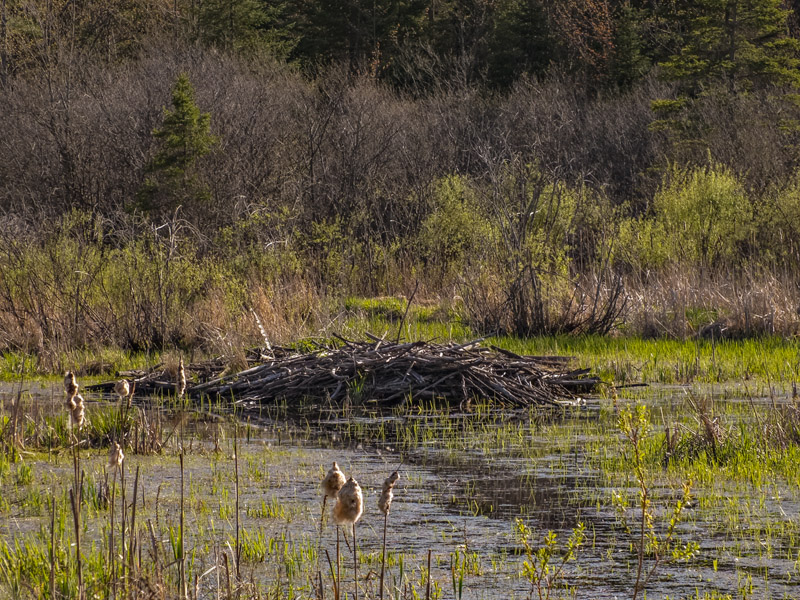
Fuji hs25 160iso f/6.4 1/240 -2/3ev 200mm efl
But this view of a lone tree in the swamp looks very nice. Good mid tones with tons of detail. You might never know that this started as a JPEG, unless of course you tried a fairly large enlargement.
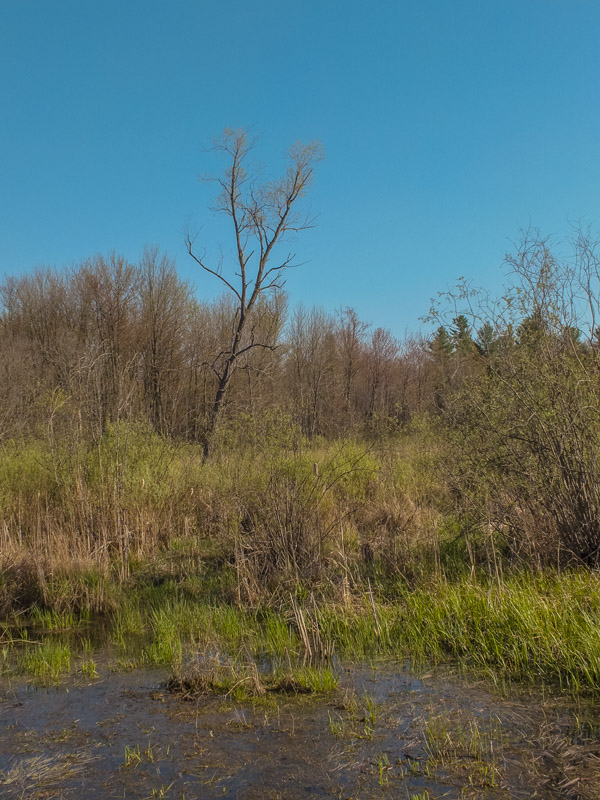
Fuji hs25 100iso f/6.4 1/280 -2/3ev 45mm efl
With the D7000, I chose a quite different rendering. I don’t process them at the same time, and in this case I probably should have.

nikon d7000 + 18-200vr 640iso f/10 1/1250 48mm efl
Note the exposures. The apertures are exactly one stop apart, with the HS25 being faster. The ISO values are 2.66 stops apart with the HS25 being slower, which leaves a 1.66 stop deficit for shutter speed. Factor in the –2/3EV compensation on the HS25 and there is now a 1 stop difference. If we multiply the HS25 shutter speed by 2, we should get the D7000 shutter speed. That number is 1/560 … yet the D7000 meter chose 1/1250. Which confirms something I have observed with some Fuji meters, and not just EXR cameras. I found the D7000 shooting higher shutter speeds than the X100 as well. Fuji seems to have inherently insensitive sensors, and they seem to not mind giving up that speed advantage to other brands.
The F770EXR looks more like the D7000 in tone and color. Again, don’t read anything into that, as I process every image as a unique entity.

fuji f770exr 100iso f/4.6 1/950 -1/3ev
Note that the shutter speed here seems a little closer to the mark.
And onward … I stopped at a spot where the sun was behind me and was blasting these lovely Birch or Poplar trees’ white bark. I love that look, so I tried to capture it. As with the previous pair, I was in a low contrast mood with the HS25 and a higher contrast mood with the others.

fuji hs25 100iso f/6.4 1/240 -2/3ev 23mm EFL
A note on the HS25’s lens. This is the body and lens from the HS10, and it was designed for a 1/2.3” sensor. This sensor is 1/2”, which is a tad larger. This accounts for better image quality, but it also accounts for the wider angle here. Wicked wide angle in fact. This works because the larger sensor takes a bit more of the FOV produced by the lens, so it is a tad wider at every focal length. That is why the HS10 had a max telephoto of 700+mm and the HS20/HS25/HS30 only go to 687mm.
The D7000 is at quite the disadvantage here. The 27mm of its wide angle is quite a bit narrow than the HS25, and since I cannot back up any further (once more rendering moot the trite “zoom with your feet” admonishment given by so many people who clearly have never tried it) I must suffer with a much lesser composition. With a dSLR, you would typically carry a 10-20 Sigma or equivalent in order to capture images like these.

nikon d7000 + 18-200VR 640iso f/11 1/800 -1/3ev 27mm efl
And the F770EXR splits the difference with its 25mm lens. Since it goes to 500mm, one cannot really complain about the loss of a single mm of wide. But some will anyway.
Interesting how this might be the best exposure of them all for the white bark.
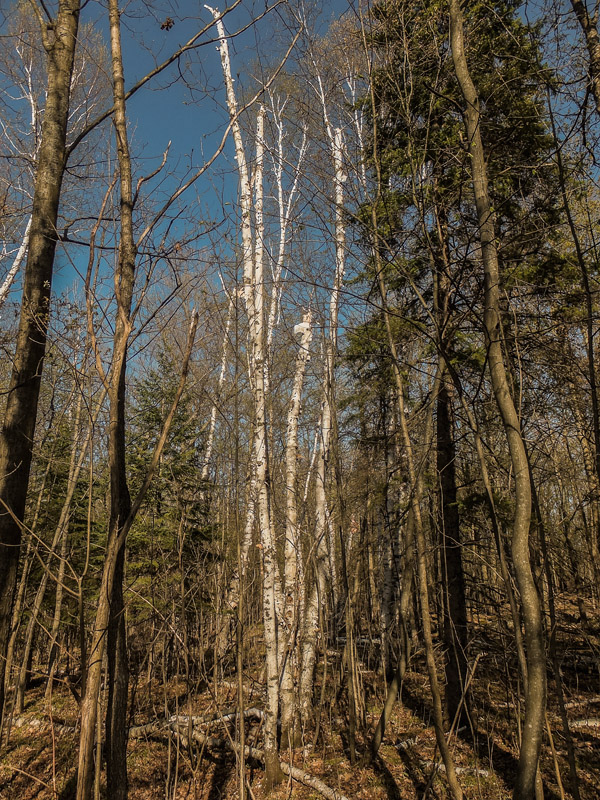
fuji f770exr 100iso f/3.5 1/600 -1/3ev 25mm efl
As I walked along, I wondered …. what went wrong, with our love, a love so rare and strong … oops … sorry. When I type familiar opening lyrics, my mind immediately leaps to the song and in this case I recalled Gary Allan’s song “Runaway” …
So, as I walked a long I noticed this single leaf hanging there from last autumn. It looked terrific with the late sun lighting it and the blue sky and so many branches backing it. So I zoomed as close as I could for an isolation shot with the HS25. The D7000 rendering is a crop, though, as I had less than half the zoom power available. The F770 is a little less close, but it mostly optical magnification, if not entirely.
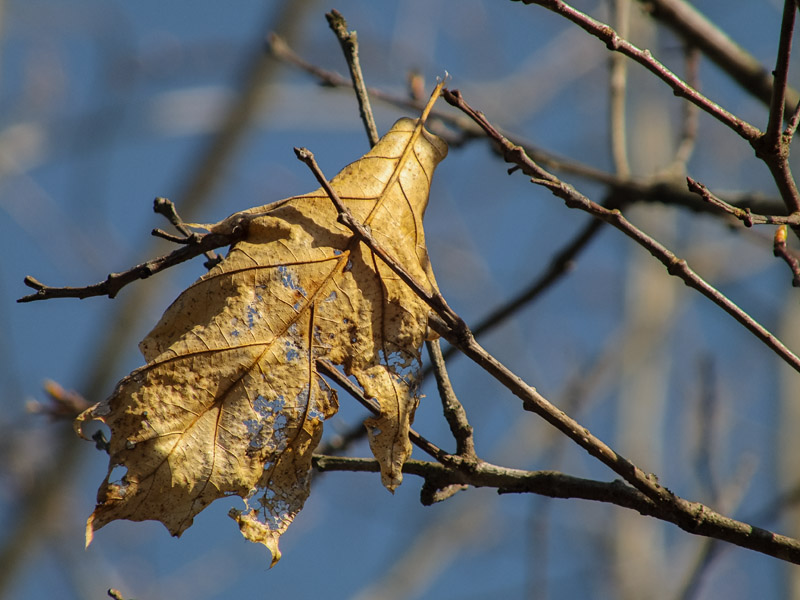
fuji hs25 100iso f/6.4 1/340 -2/3ev 687mm efl
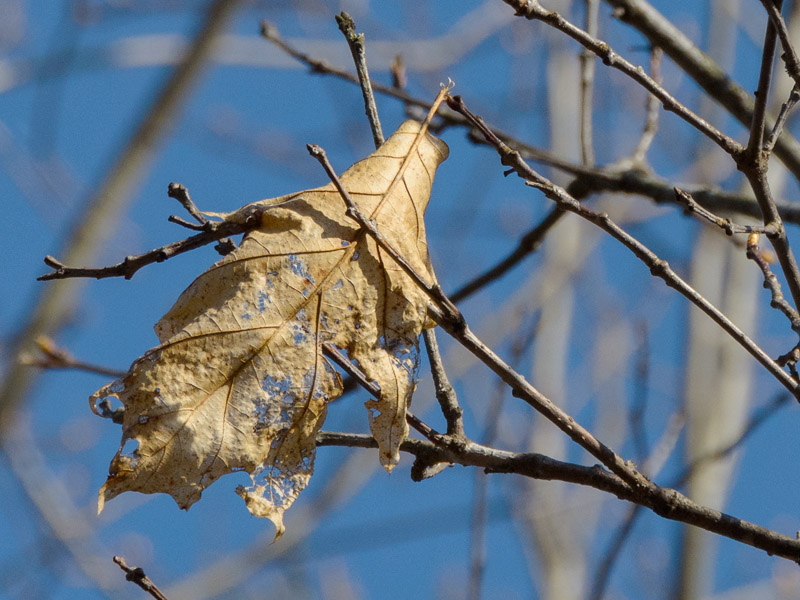
nikon d7000 + 18-200VR 640iso f/11 1/640 -1/3ev 300mm efl
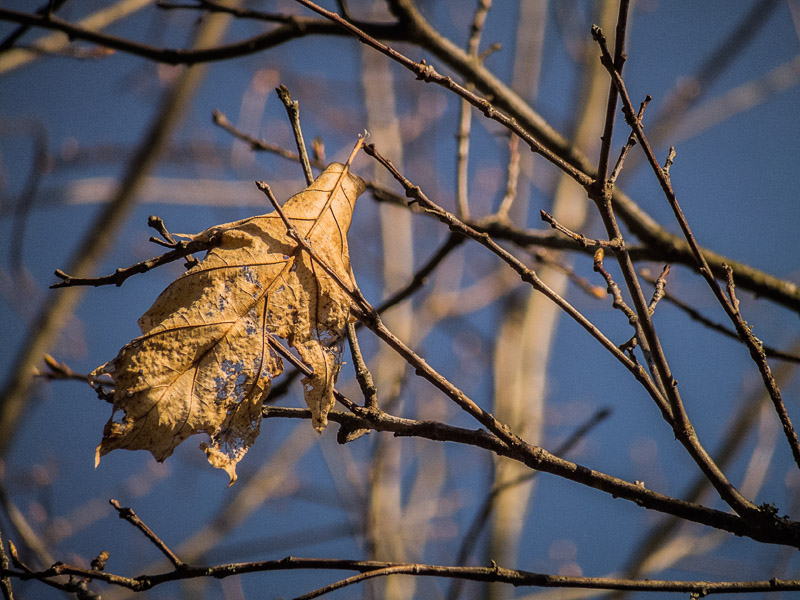
fuji f770exr 100iso f/5.3 1/500 -1ev 501mm efl
Don’t read anything into tonal and color differences. They were not at all processed together, or even on the same day. The vignetting on the f770 image is real, but I think I enhanced it a bit accidentally. So don’t get too excited about that either. All three are obviously perfectly competent to isolate on something further away. You can crop a dSLR quite a bit before the pixels degenerate to the natural level of those on a 1/2” sensor. So you get some free EFL form that.
Nearing the end of the walk, I see this tree stump that reminds me a lot of the Elephant Man (John Merrick) … my apologies if that offends anyone. I mean no disrespect, but it creates an uncanny link to that movie in my mind.
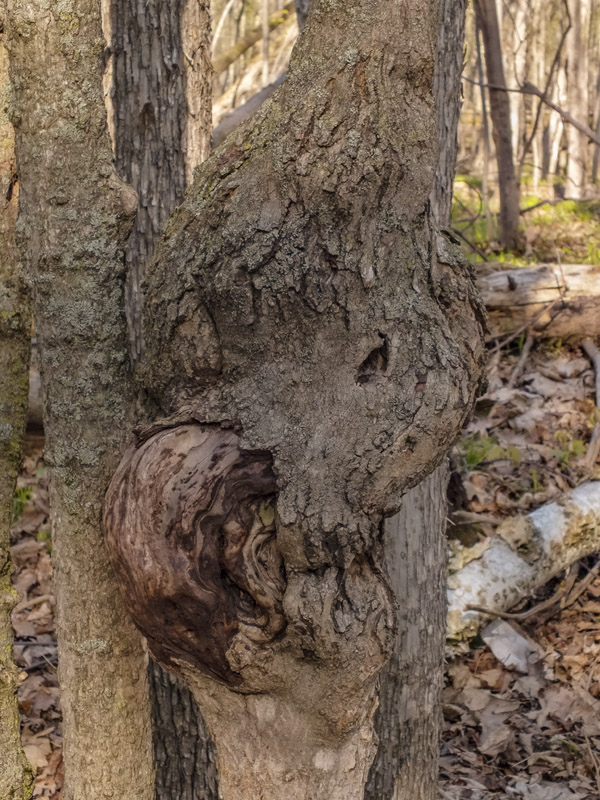
fuji hs25 250iso f/6.4 1/90 -2/3ev 88mm efl
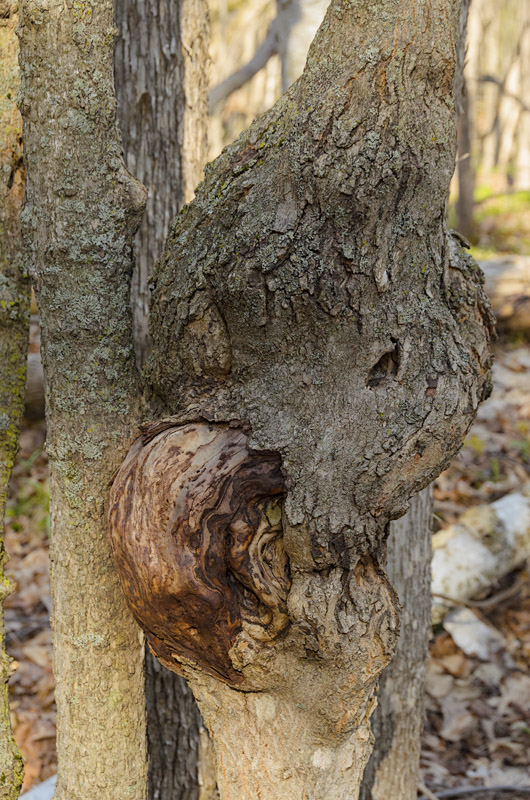
nikon d7000 + 18-200VR 640iso f/11 1/100 -1/3ev 97mm efl
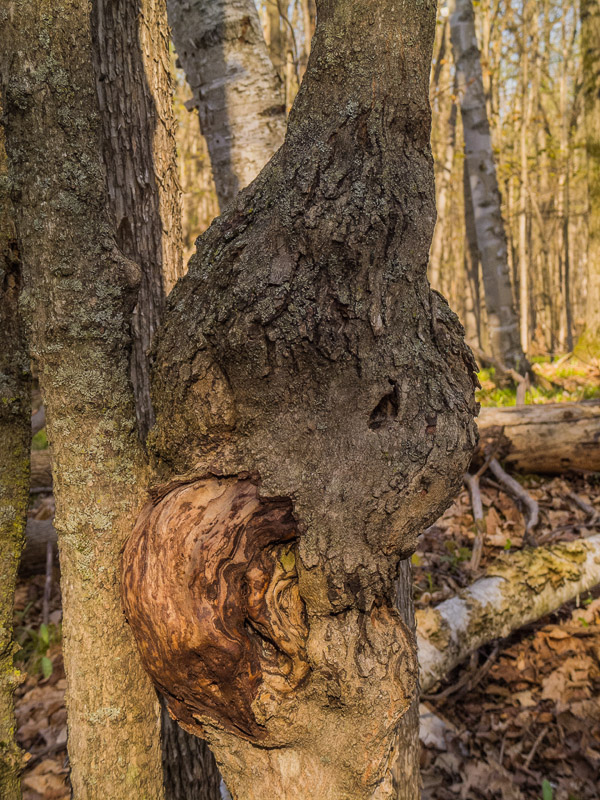
fuji f770exr 100iso f/4.7 1/100 -2/3ev 83mm efl
If you haven’t noticed this by now, let me just point out that even at this size, the RAW images of the D7000 and the F770EXR clearly show more low contrast fine details in the bark. That’s why we shoot RAW even on these tiny sensors.
As I walk across the parking lot to my car, I notice that there is a Blue Jay flitting about the trees about 50 feet from me. It comes out to a puddle for a drink and seems to prefer to walk on the gravel rather than fly right to the puddle. I believe that this is a female, since the great tuft on the back of the head seems to be missing.
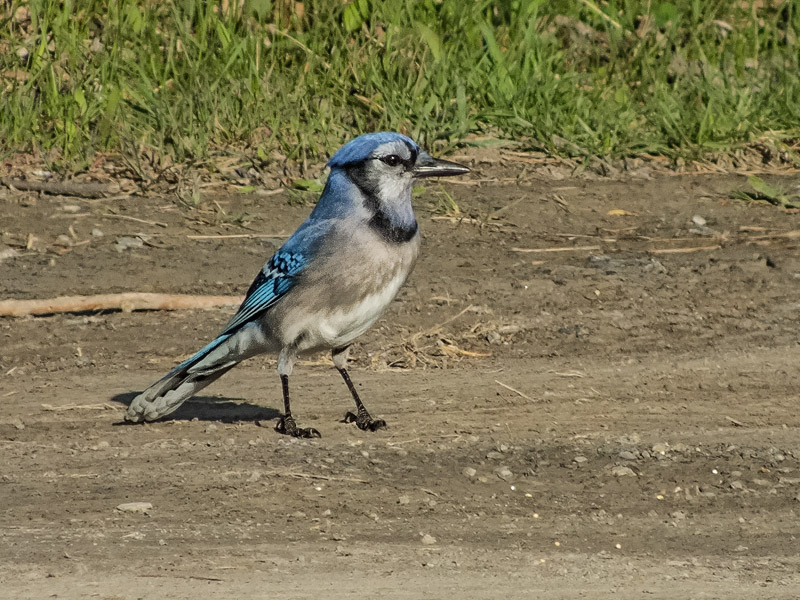
fuji hs25 100iso f/6.4 1/420 -2/3ev 687mm efl
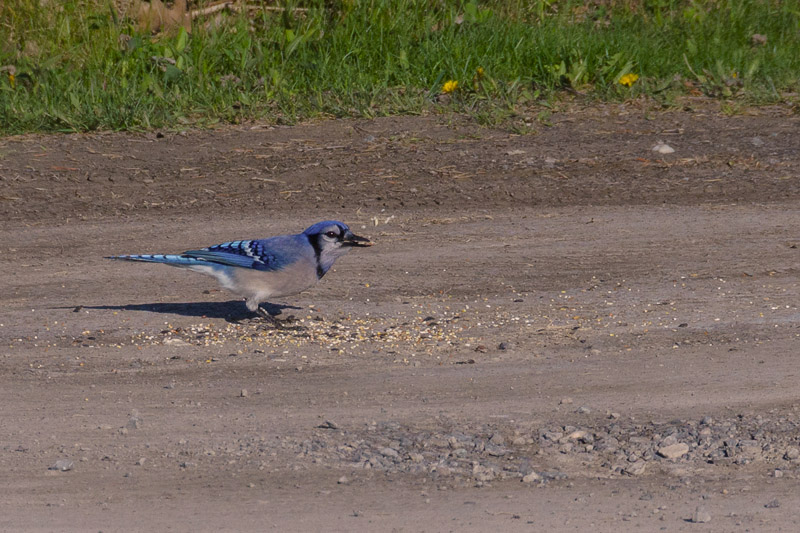
nikon d7000 + 18-200VR 640iso f/11 1/1250 -1/3ev 300mm efl
Optical magnification generally wins, but of course the top image here would not stand up to a lot of close scrutiny. I had to resort to Topaz Adjust to pull out what detail was there and it looks great at web sizes. One would not be able, though, to produce an enlargement of this image.
I regret not bringing the 70-300VR, which has an EFL of 450mm. That would have mage for a more interesting comparison of reach, however it must be noted that I rarely found the D7000 to be outgunned, since I know that there is a lot of crop room on a 16MP APS-C sensor of the quality of Nikon’s.
Before I left, I noticed a tiny bird in a tree a really long distance from me, so I shot it with 2x intelligent zoom on. And it turned out to be a Dove. Terrible image quality here as the bird was in shadow (unlike the baby geese earlier) … but you can see what it is and that can be useful.
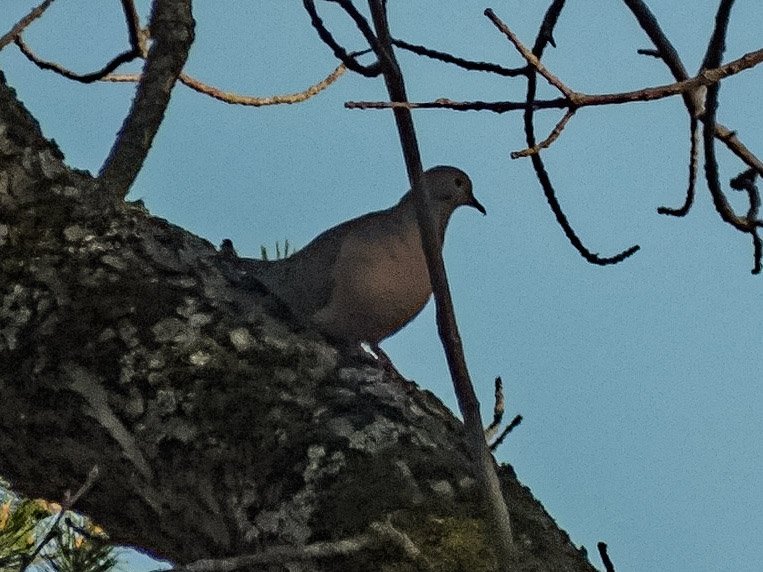
fuji hs25 100iso f/6.4 1/450 687mm 2x izoom 1374mm efl
When I arrived home, I captured a last image with the HS25 of the Dicentra (Bleeding Hearts) coming into bloom at my front step.
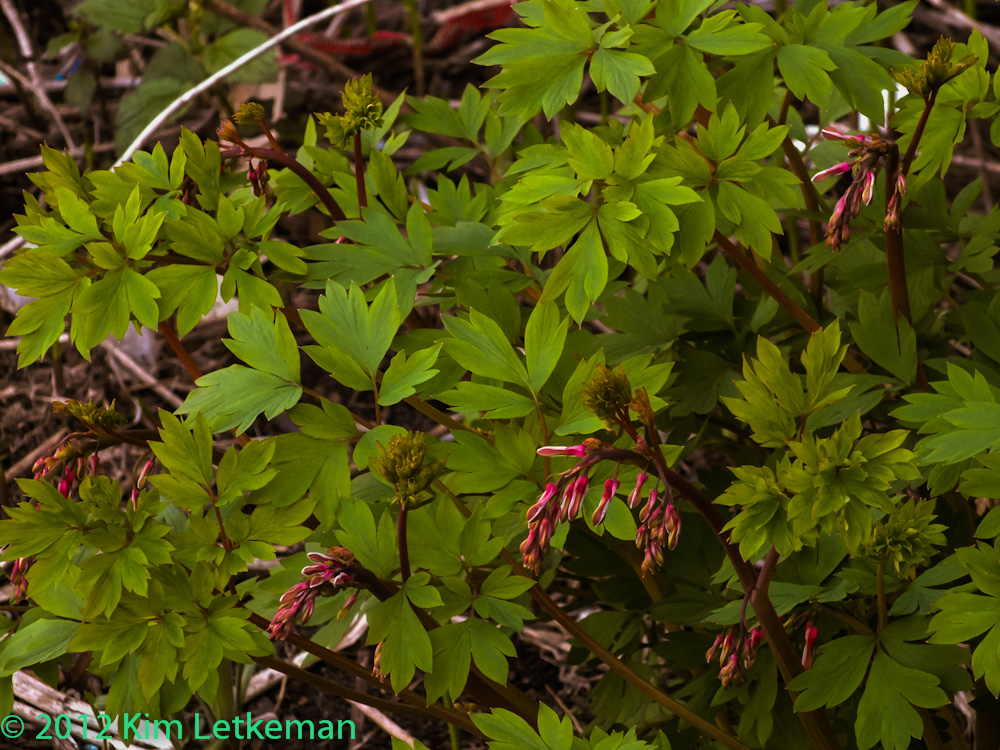
fuji hs25 640iso f/5 1/120 -1/3ev 244mm efl
I turned the D7000 towards a couple of European Starlings wandering about my front yard looking for grubs. Here, one appears to have snagged one just beside the road going along the side of my property.
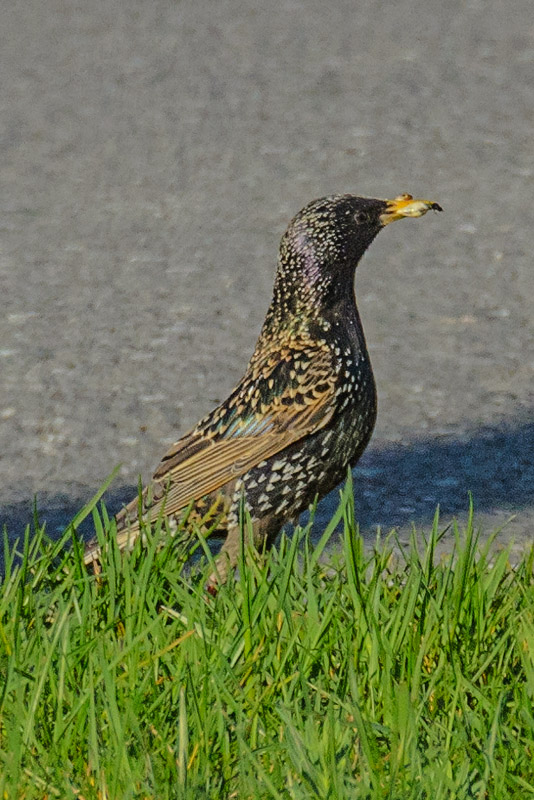
nikon d7000 + 18-200VR 640iso f/11 1/800 -1/3ev 300mm efl
And that really is that.
conclusion
Any one of these cameras can capture a great image in strong light. It is sometimes hard to tell the different between them, especially if you process everything as I do. The details do come out better with RAW, so the F770EXR would probably be my choice over the HS25EXR was a walk about camera. Of course, the D7000 would win against both if I was in the mood to carry slightly larger equipment.
I can tell you that shooting the small birds, who tend to move really fast, was vastly easier with the D7000 and its wonderful OVF. There was no contest at all and if that’s what you like shooting then I highly recommend that you look into a dSLR. However, if you don’t mind working really hard for the few shots you get, then the incredible magnification of the HS25 will be a lot of fun for you. Yet, for the price difference I would consider the HS30, which has RAW and a much better EVF.
And don’t forget the F770EXR. Lots of reach and it fits in a pocket. The lens on the one Fuji sent me was magnificent, as you will see when I publish the Stockholm travel report. Coming soon I hope …